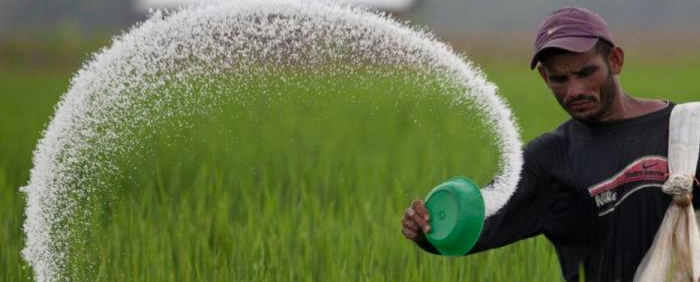
What are slow release fertilizers?
Slow release fertilisers are the pellets of fertilizers which are released slowly on the basis of microbial activity and remain in the soil for a longer period of time. The activity of microbes is based completely on the soil temperature. Some other common definitions of slow release fertilizers are:
- Slow release fertilizers are the natural fertilizers which release nutrients over a long period of time.
- Slow release fertilizers are the covered fertilizers whose rate of release is regulated by the outer coatings of sulphur or other different polymeric compounds.
- The fertilizer which has long persistence in soil or in plant body in pellet or in any other form due to any added material is known as slow release fertilizer.
Slow release fertilizers are of two types i.e. organic & soluble or coated slow release fertilizers. The organic slow release fertilizers are totally dependent on microbial activity and have a long persistence in the soil. Due to this, these are not available to the plants at the stage they need them as these take a long time to break before available to the plants. For making the organic fertilizers more efficient and active the soil microbial activity should be increased and the soil temperature should be warm or moist enough for the microbial existence. The other type is slowly soluble or coated fertilizers which are mainly available in pellet form to the growers or farmers. These coated fertilizers are dependent on soil moisture and temperature for the release of the nutrients which sometimes takes long periods of time sometimes even up to 12 months or so. The main drawback of slow release fertilizers is that they are not available to the plants when they need them most.
Slow release fertilizers achieve their characteristics by a number of mechanisms. Their release rates are controlled by the active ingredient of the chemicals added to them. The technology behind the slow release fertilizers is the carriers which are added into them and which carries their breakdown into the soil. The other ways of making a fertilizer slow release are the addition of physical or chemical barrier which slows down the breakdown of nitrogen etc. in the fertilizer pellet. For example, sulfur coated urea is one slow release fertilizer of this kind. Both the particle size of the pellet and the pore spaces of the pellet decides the release rate of nutrients from the pellet. Large pore size and smaller pellet size will increase the release of nutrient from the pellet and vice versa. Another kind of slow release is urea formaldehyde which goes through some chemical change before available to the plants making it a slow releasing fertilizer. Now, these days a thin plastic covering is made from the fertilizer which decides the breakdown rates of fertilizers. But the main drawback of slow release fertilizers is that they need to be applied in large quantities at the initial stages for their future availability to the plants.
Benefits of slow release fertilizers:
- These make the possibility of availability of nutrients to the plants in late stages of growth also. This is possible due to their long time persistence in soil or in the plant body.
- These also decrease the loss of fertilizers due to seepage or runoff and thus increase their uptake to the plants or into soil.
- These also help in increased crop productions in the areas where the moisture availability is less or in drought areas. As when they met water they become reactive and break down into soluble products.
- Slow-release fertilizers are also economic and easy to use than the fast or controlled release fertilizers.
- These also do not go for soil pollution as remain inactive in the soil for longer periods and thus do not have any detrimental effect on soil or environment.
List of slow release fertilizers:
- Urea formaldehyde(UF)
- Sulphur coated urea
- Sulfonyl urea(SU)
- Methylene urea(MU)
- Isobutylidene diurea(IBDU)
- Natural organics
- Urea form
- Polymer coated urea
- Liquid suspensions
I have need of your slow release fertiliser for big pot fruit plants in hp india please sujest me how i got it and what is cost.
What are the organic sources of slow release fertilizers, may I get the information about it?